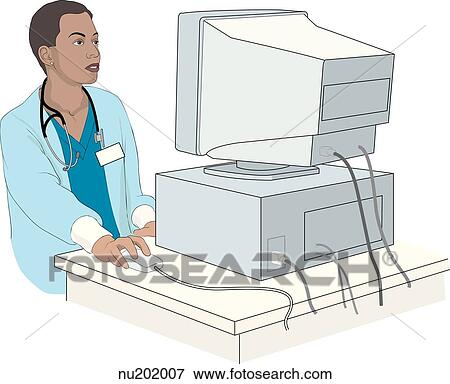

The development of standards for EMR interoperability is vital because of the fact that without interoperable EMRs, practicing nurses, physicians, pharmacies and health care institutions cannot share patient information, which is necessary for timely patient-centered care. The Electronic Health Record (EHR) that adds general health-related information to the EPR that is not necessarily related to a disease (Walker, 2005).

The Electronic Patient Record (EPR) which is a patient-centered record with information from multiple institutions and 5. The Electronic Medical Record (EMR) which restructures and optimizes the documents of the previous levels ensuring inter-operability of all documentation systems. The Computerized Medical Record (CMR), which makes the documents of level 1 electronically available. The Automated Medical Record, which is a paper-based record with some computer-generated documents. Five levels of Electronic Health Care Record (EHCR) keeping has been classified. Although an EMR system has the potential for invasion of a patient's medical privacy, EMRs can serve a great purpose when monitored effectively (Mandl et.al, 2001). The term Electronic Medical Record can be expanded to include systems which keep track of other relevant medical information. Electronic Medical Record keeping facilitates access of patient data by nurses at any given location, building automated checks for drug and allergy interactions, clinical notes and laboratory reports. Success of computerization in nursing practice lies in utilization of features, functions, input and output modalities that nurse would find most useful (Mihailidis et.al, 2006).Īn Electronic Medical Record (EMR) is a medical record in digital format.

Instruments like Nurses' Computer Attitudes Inventory (NCATT), Revised NCATT, Dambrodt's scale for Computer Attitudes measure nurses' attitudes on computerization (Rohan and Peter, 1996). A study to assess the community hospital nurses' use of electronic health records and views of the impact of such records on job performance and patient outcomes has shown that nurses prefer electronic records to paper charts and are comfortable with technology (Kossman and Scheidenhelm, 2008). The implementation of voice recognition technology in mobile healthcare settings is yet another recent innovation (Chang et.al, 2008).Ī study to determine the attitudes of Registered Nurses towards the use of computers in the hospital setting as a predictor of their future behavior based on the theory of Planned Behavior with nine different indices namely, behavioural intention towards computer use, general attitudes toward computer use, nursing attitudes toward computer use, threat involved in computer use, challenge involved in computer use, organizational climate, departmental climate, attraction to technological innovations/innovativeness and self-efficacy has shown that the threat and challenge that are involved in computer use are mediating variables to the understanding of the process of predicting attitudes and intentions of nurses in using computers (Shoham and Gonen, 2008). Computerization of health care delivery includes computerization of the medical records popularly known as the Electronic Medical Record System (EMR), Electronic Prescriptions, Personal Digital Assistants, Computer Automated Cancer Detection and Computerized Theatre Management Applications. Computerization has contributed enormously towards the reduction of medical errors and the problems associated with such errors (Gan et.al, 2005). One such innovation is the computerization of the entire health care delivery system. Science has bestowed health care delivery system with excellent technological innovations.


 0 kommentar(er)
0 kommentar(er)
